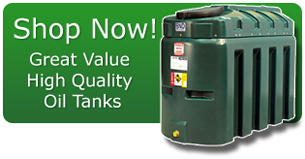Tank cleaning
Tank cleaning is a particularly hazardous activity as it involves working in confined spaces with explosive and hazardous vapours.
Over time, tanks can build up sludge deposits which are often a combination of condensation, corrosion and solids contained in the products stored in the tank. Sludge can cause premature failure of the tank as it assists corrosion and it can also block filters and pipe work, resulting in the failure of plant and equipment.
Calves Hill has a dedicated team of tank cleaning technicians who are experienced and trained in all aspects of tank cleaning. Our tank cleaning technicians have completed confined space training courses and also training courses for the use of breathing apparatus.
Prior to starting a tank clean we will visit the site and assess the individual risks associated with the tanks that we are quoting to clean. Obviously there are different risks associated with above or below ground tanks. A typical work procedure for below ground tank cleaning would be as follows:
- Carry out initial site survey. Record the type and capacity of the tanks, obtain COSHH information for the products stored in the tanks. Provide written quotation for the works.
- Issue method statement and risk assessments. Agree the safe method of working with the customer prior to starting work, determine if we are to use the customer’s permit to work system or our own. Issue copies of our technician’s training certificates with the method statement. This information is provided once an order has been received.
- Sign on site. Let the site operator know that we have arrived and take part in any site induction.
- Permit to work. Obtain a permit to work or alternatively issue our own.
- Isolate working area. Erect a barrier and no smoking signage around the working area. This protects our workforce and yours!
- PPE. Prior to starting work put on our personal protective equipment. This usually consists of foot, head, eye and hearing protection, gloves and overalls.
- Isolation of plant and equipment. Ensure all valves are closed and that, for instance, generators are switched onto their day tank facility. Also ensure the tank can’t be filled whilst we are inside it!
- Open up tank. Using air or non sparking hand tools open up the tank by removing the manlid.
- Tank emptying. Using a vacuum tanker, uplift the remaining tank contents for disposal at a licensed waste disposal site. If applicable we can provide temporary storage for any residual product, which can be recovered and reused.
- Safety equipment. Prior to starting the tank clean and making a confined space entry, set up the recovery tripod and winch over the entry to the tank, check it’s operation, ensure the technician entering the tank is wearing a harness and gas monitor as well as the standard PPE.
- Tank entry. Make the confined space entry into the tank. Whilst one technician is in the tank another technician maintains contact with them, from the tank entry point, another technician is also available should an incident occur to raise the alarm and summon help.
- Tank cleaning. Clean the tank to the required standard, this usually involves pressure washing or jetting the tank, uplifting the residues as work proceeds, using a vacuum tanker, then ragging the tank out upon completion of the works. Should the work be of an extended duration, two technicians would take it in turns to work in the tank, only one technician will be in the tank at any one time.
- Tank exit. Ensure all equipment has been removed from inside the tank, then refit the manlid and if necessary a new gasket and bolts using air or hand tools.
- Completion. Sign off the permit, put the tank back into service and clear away our equipment. Provide copies of all waste disposal documentation to the customer.
As you can see from above procedure, Calves Hill Ltd provides a safe method of work to ensure this dangerous work activity is carried out safely.
Please contact us to discuss your tank cleaning requirements.
